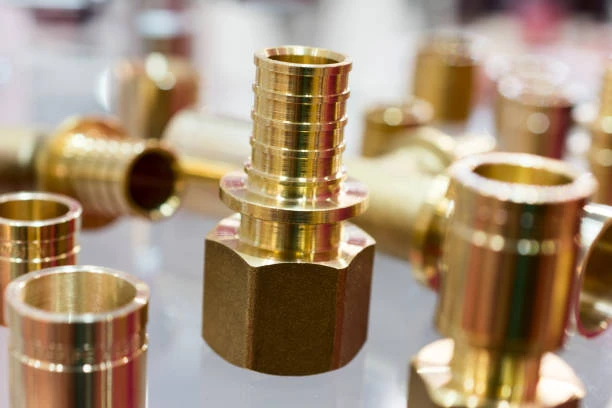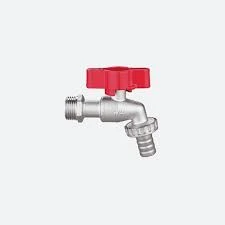In households across the country, brass fittings are a common component in various plumbing fixtures, including water dispensers. While these fittings offer durability and corrosion resistance, recent concerns have arisen regarding their potential to leach lead into drinking water. This article will delve into the significance of brass fittings, the health risks associated with lead leaching, and what homeowners can do to ensure safe drinking water.
Understanding Brass Fittings
Brass fittings are widely used in plumbing systems due to their strength and versatility. Made primarily from a copper and zinc alloy, they are resistant to rust and can withstand high temperatures and pressures. Common applications for brass fittings include:
- Plumbing connections: Used in pipes to connect different sections.
- Water dispensers: Often found in the faucets and tubing of water coolers.
- Heating systems: Essential for ensuring safe fluid transfer.
While brass fittings have been a reliable choice for plumbing, the presence of lead in some brass alloys has raised significant health concerns.
The Lead Problem in Brass Fittings
Lead has been used in brass fittings historically due to its properties that enhance the strength and workability of the metal. However, lead is a toxic metal, and even small amounts can pose health risks, particularly to children and pregnant women. The leaching of lead into drinking water can occur through:
- Corrosion: When water is stagnant or acidic, it can corrode brass fittings, releasing lead particles into the water supply.
- Temperature changes: High temperatures can accelerate the leaching process, especially in systems that heat water.
The Environmental Protection Agency (EPA) has established that there is no safe level of lead exposure, and even low levels can result in serious health issues.
Health Risks of Lead Exposure
Lead exposure can lead to a variety of health problems, including:
- Neurological issues: Lead is particularly harmful to the developing brains of children, potentially resulting in cognitive deficits, behavioral problems, and learning disabilities.
- Kidney damage: Chronic exposure to lead can lead to kidney dysfunction and other renal issues.
- Cardiovascular problems: Adults exposed to lead are at a higher risk of hypertension and heart disease.
Given these risks, the potential for lead leaching from brass fittings in water dispensers is a significant public health concern.

Regulatory Measures and Standards
In response to concerns about lead exposure from plumbing materials, regulations have evolved over the years. The Safe Drinking Water Act (SDWA) mandates that all materials used in drinking water systems meet specific standards to minimize lead content. In 2011, the Reduction of Lead in Drinking Water Act further tightened these regulations, limiting the lead content in plumbing fixtures to 0.25% (by weight).
However, older brass fittings may still contain higher lead levels, and not all plumbing materials meet these newer standards. Homeowners should be aware of the age of their plumbing systems and the materials used.
Identifying Safe Brass Fittings
To ensure the safety of drinking water, homeowners should consider the following when it comes to brass fittings:
- Look for certifications: When purchasing new fixtures, check for labels that indicate compliance with lead-free standards, such as the NSF/ANSI 61 certification.
- Understand the composition: Brass fittings marked as “lead-free” typically contain less than 0.2% lead and are made from alternative alloys that do not leach harmful levels of lead.
- Know your plumbing: If your home was built before 2014, it may have brass fittings that do not comply with current lead-free standards. Consider having your plumbing inspected or replaced if necessary.
Maintaining Water Quality in Your Home
In addition to selecting safe brass fittings, homeowners can take proactive measures to ensure the quality of their drinking water:
- Flushing taps: Run cold water for at least 30 seconds before using it for drinking or cooking, especially if the water has been sitting in the pipes for several hours.
- Regular testing: Test your water for lead and other contaminants using a certified lab. This is particularly important if you suspect that your plumbing contains lead-based materials.
- Installing filters: Use water filters that are certified to remove lead, providing an extra layer of protection for your drinking water.
Conclusion
The potential for brass fitting in water dispensers to leach lead into drinking water is a pressing concern for homeowners. While these fittings have long been a staple in plumbing systems, awareness of the risks associated with lead exposure is essential for maintaining safe drinking water. By choosing lead-free fittings, maintaining plumbing systems, and implementing water quality measures, homeowners can protect themselves and their families from the dangers of lead.
Frequently Asked Questions (FAQs)
1. What are brass fitting?
Brass fitting are connectors used in plumbing systems, made primarily of copper and zinc, and often found in water dispensers and other plumbing fixtures.
2. Why is lead a concern in brass fitting?
Lead can leach into drinking water from brass fitting, posing significant health risks, particularly to children and pregnant women.
3. How can I ensure my water dispenser is safe?
Look for lead-free certified fittings, regularly test your water for contaminants, and flush the taps before use.
4. What are the health effects of lead exposure?
Lead exposure can lead to neurological issues, kidney damage, and cardiovascular problems, especially in vulnerable populations like children.
5. How can I test my home’s water for lead?
You can test your water by sending samples to a certified laboratory that specializes in water quality testing. Many local health departments also offer testing services.

















